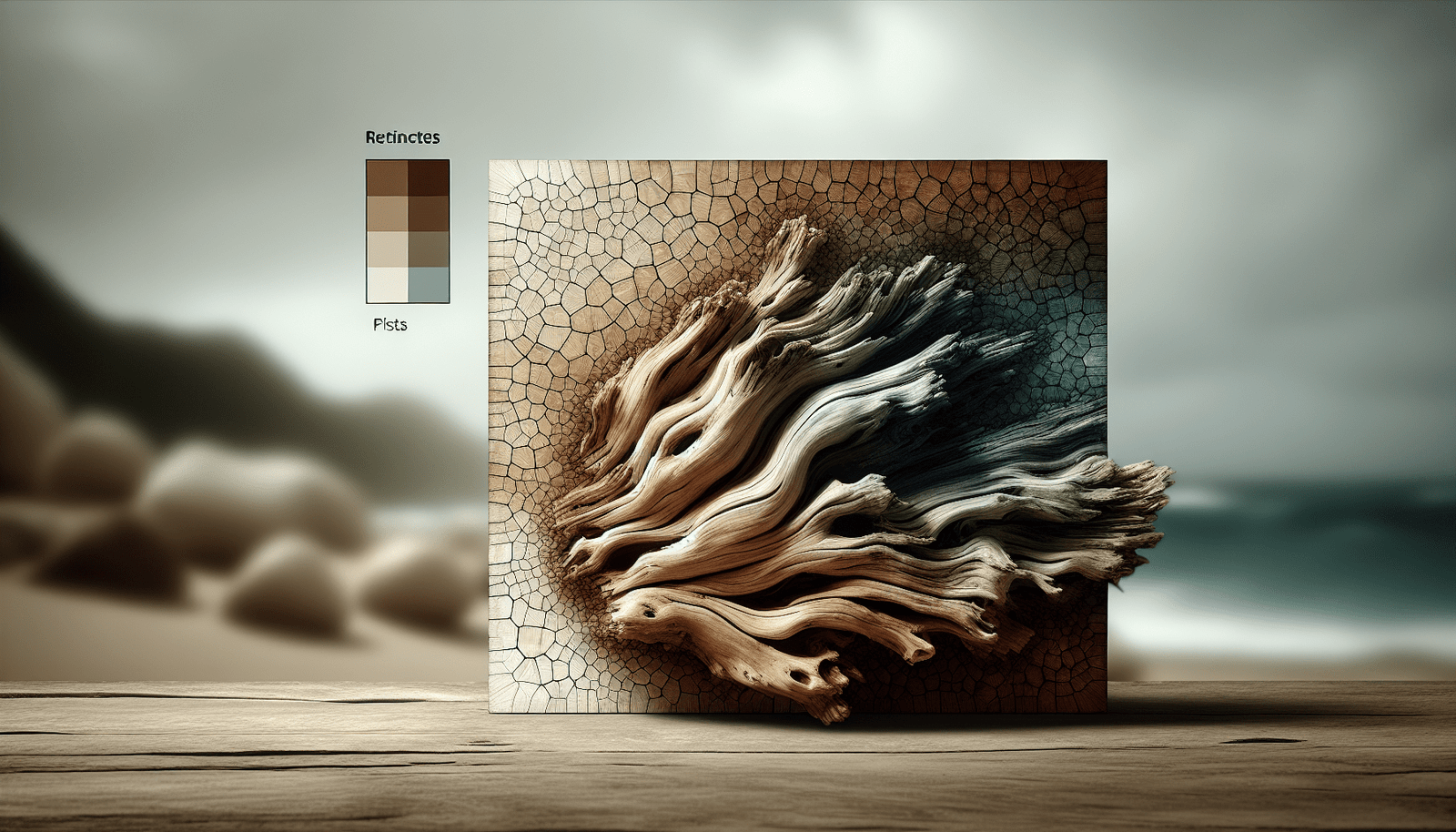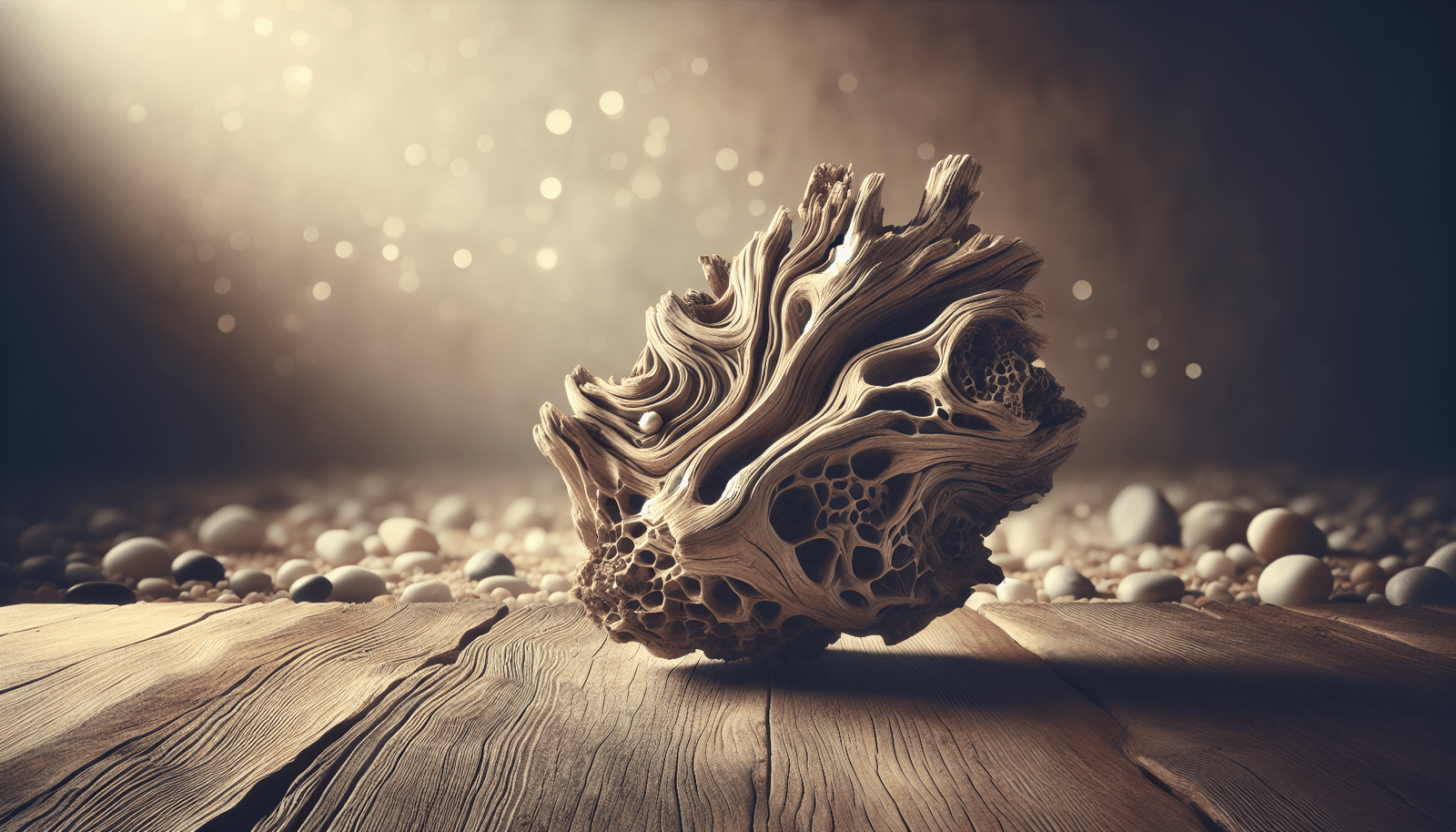Have you ever wandered along a beach, pausing to admire the scattered pieces of driftwood washed ashore by the tides? This natural artistry, created by the sea and sand, begs the question: How can these seemingly random pieces be transformed into a stunning masterpiece like a driftwood mosaic?
What is a Driftwood Mosaic?
A driftwood mosaic is an artistic assembly of driftwood pieces arranged to form a coherent pattern or image. It’s a unique art form that combines the natural beauty of driftwood with the skill and creativity of the artist. Like traditional mosaics that use small pieces of glass or tiles, driftwood mosaics employ wood pieces of varied shapes, sizes, and textures to create captivating works.
The Origin of Driftwood
Driftwood begins its journey as a part of a tree. It becomes adrift when it’s washed into the ocean, often due to storms, floods, or erosion. Across potentially long distances, these wood pieces are weathered by saltwater and sand, giving them a smooth and textured appearance. This transformation is nature’s way of crafting art, as the sea’s relentless erosive power and the journey through the ocean shape each piece uniquely.
Cultural and Aesthetic Significance
Driftwood has long held a place of importance in various cultures. Beyond its natural charm, it has been used in crafting tools, creating sculptures, and even in spiritual or ritualistic practices. Each piece carries its history and character, adding depth to any artwork it becomes part of. The aesthetic appeal lies in its texture and color, with tones ranging from light blond to deep brown, enhancing the visual interest in any mosaic setting.
The Craft of Creating Driftwood Mosaics
Creating a driftwood mosaic involves several steps, skill, and creativity. It’s about selecting the right pieces, conceptualizing a design, and carefully assembling them into a coherent image or pattern.
Collecting Driftwood
The first step in creating a driftwood mosaic is gathering the raw material. Searching for driftwood can be a therapeutic activity, giving you a chance to connect with nature. Look for pieces of varying shapes and sizes, as this will provide more options when piecing together your mosaic.
Consider these tips when collecting driftwood:
- Check local regulations: Ensure collecting driftwood is permitted in your area.
- Look for distinct shapes and textures: Interesting textures can add depth to your mosaic.
- Ensure it’s dry: Wet driftwood can be heavy and might not hold up well when used in art pieces.
Preparing Driftwood for Use
Before you can start creating your mosaic, you need to prepare the driftwood to ensure it is clean and suitable for artwork.
Cleaning: Remove any dirt, algae, or salt deposits by soaking the wood in freshwater. Scrubbing gently can help in cleaning stubborn dirt.
Drying: It’s crucial to let the driftwood dry completely to avoid mold or decay. Place it in a sunny spot or a well-ventilated area for several days.
Sanding: Use sandpaper to smoothen any rough edges. This not only makes handling the wood easier but also enhances its natural beauty.
Planning Your Design
Planning is crucial to achieving a harmonious and aesthetically pleasing mosaic. Begin with an idea or sketch of the design you want to create. This could be abstract, like a pattern or form, or something representational, like an animal or landscape.
Consider these design elements:
- Color Harmony: Utilize the natural color variations in driftwood to add depth.
- Contrast and Texture: Different textures can make sections stand out, capturing attention.
- Scale and Proportion: Varying the size of the wood pieces can add dynamism to the artwork.
Assembling the Mosaic
Once your pieces are collected and the design is planned, the assembly begins. This is where creativity meets patience, as arranging the wood pieces can be compared to solving a complex puzzle.
Tools Required
You may need several tools to aid in the process:
- Adhesives: Strong wood glue will ensure pieces stay in place.
- Clamps: Helpful to hold pieces together while they dry.
- Saw: A small saw might be needed to trim larger pieces.
- Brushes: For applying adhesives uniformly.
Start with the larger pieces and gradually fill in with smaller ones. This method gives you a robust framework to build upon and ensures stability. Take time to assess the fit of each piece; it should seamlessly fit with its neighbor, much like puzzle pieces.
Securing the Mosaic
Once your mosaic is complete, securing it properly will ensure it lasts for a long time. Check all the joins and ensure the adhesive has bonded firmly. You might also want to apply a sealant or varnish to protect the wood and enhance its color and texture.

The Benefits of Creating Driftwood Mosaics
Aside from producing a beautiful piece of art, creating driftwood mosaics offers numerous benefits. It’s not just about the finished product but also the experience and satisfaction of the journey.
Therapeutic Experience
Working with driftwood can be incredibly soothing. It allows for a meditative escape as you connect with natural elements. Being immersed in this creative process can reduce stress and induce a state of calm.
Eco-Friendly Art
Driftwood mosaics utilize natural materials, making it a sustainable form of art. By re-using nature’s leftovers, you contribute to positive environmental practices. Instead of letting driftwood waste away, you’re transforming it into something beautiful and lasting.
Boosting Creativity
Engaging in driftwood mosaic art can significantly enhance your creativity. Each piece of driftwood presents a unique challenge; arranging them into a cohesive artwork nurtures problem-solving skills and innovative thinking.
Unique Decor
Adding a driftwood mosaic to your home or garden introduces a unique decor element. Each mosaic is distinct due to the multitude of available wood types and configurations, ensuring a personalized touch that other forms of art may lack.
Driftwood Mosaics in Modern Art
Driftwood art isn’t just a pastime; it’s gaining recognition in contemporary art galleries and shows. Artists around the world are beginning to explore the potential of driftwood as a medium, showcasing its versatility and aesthetic appeal.
Influences in Interior Design
Interior designers have started incorporating driftwood pieces in their projects, especially in spaces intended to invoke a natural or coastal theme. These artworks offer a balance between sophistication and rustic charm, making them a popular choice for various settings.
Public and Outdoor Installations
Some artists take driftwood mosaics into larger scales, creating public installations that capture the imagination of many. Such pieces often act as focal points, drawing attention and encouraging viewers to perceive their surroundings in new ways.

Tips for Beginners
If you’re new to creating driftwood mosaics, here are some helpful tips to get you started:
Start Small: Begin with a small project. This way, you can get the hang of the process without becoming overwhelmed.
Gather Abundantly: When collecting driftwood, gather more than you think you’ll need. Having options allows for more creativity when assembling.
Patience is Key: Take your time arranging and rearranging pieces until you’re satisfied with the design.
Experiment: Don’t be afraid to try different patterns, textures, or shapes. Driftwood art is all about creativity and personal expression.
Learn from Others: Join online forums or local art classes to gather inspiration and get feedback on your work.
Inspiring Driftwood Artists
Several artists have made significant contributions to the driftwood mosaic art form, garnering attention worldwide. Their work can be a source of inspiration as you start your driftwood journey:
Debra Bernier
Known for her hypnotic driftwood sculptures, Debra Bernier incorporates natural elements seamlessly within her mosaics, often highlighting feminine and organic forms.
James Doran-Webb
Specializing in large-scale driftwood sculptures, James creates lifelike animal figures. His work demonstrates the structural capabilities and expressive potential of driftwood.
Danielle Creenaune
Danielle explores the intersection of nature and human narrative, using driftwood to tell intricate stories through her detailed mosaics and installations.
Conclusion
Creating driftwood mosaics is a rewarding artistic endeavor that blends the natural world with personal creativity. With each piece of driftwood carrying its own history, you have the opportunity to craft a unique artwork that tells your story. Whether practiced as a hobby or presented in an art gallery, driftwood mosaics offer endless possibilities for exploration and expression. By understanding the process and tapping into your creativity, you can craft pieces that not only represent personal achievement but also serve as tributes to the beauty and resilience of nature’s cycles.

